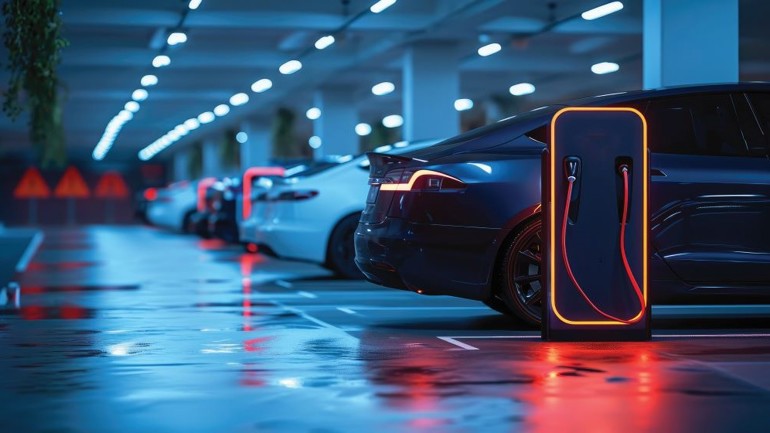


Electric vehicles (EVs) are the future of transportation—cleaner, greener, and increasingly in demand. But for building owners, the challenge lies in creating the infrastructure to support them. As more residents make the switch to EVs, the need for reliable, convenient at-home charging grows. Offering EV charging stations in your building not only attracts eco-conscious tenants but also future-proofs your property for the growing shift towards electric mobility. However, installing this infrastructure requires thoughtful planning and overcoming certain hurdles.
As electric vehicles (EVs) continue to grow in popularity, understanding the ins and outs of EV charging is essential for both new and prospective owners. There are many factors to consider, from charging at home to using public stations, installing building infrastructure, and managing costs. This FAQ guide answers the most common questions about EV charging solutions, helping you navigate installation, battery care, costs, and more. Whether you're a homeowner, a strata manager, or a business looking to implement charging stations, this guide provides practical insights to make the transition to EVs seamless and efficient.
Join us as we outline our expert approach to implementing EV charging solutions, explore the benefits for your building, and address the key challenges you may face when implementing your plan.
What are the different types of EV chargers?
EV chargers are categorised into three levels:
Level 1: Uses a standard household outlet (120V) and is the slowest.
Level 2: Requires a 240V outlet and charges significantly faster.
Level 3 (DC Fast Charging): Provides rapid charging but is typically found at commercial stations. (Climate Choices)
How long does it take to charge an EV?
Charging time depends on the vehicle's battery size and the charger's power output.
Level 1: 8-24 hours for a full charge.
Level 2: 4-8 hours for a full charge.
Level 3: 15-45 minutes for an 80% charge. (Transport for NSW)
Can I charge my EV at home?
Yes! Most EV owners install a Level 2 charger at home for faster charging.
What do I need to install a home EV charger?
You may need:
A dedicated 240V circuit.
Professional installation by a licensed electrician.
Space for wall mounting (for some chargers).
Does frequent fast charging damage the battery?
Fast charging generates more heat, which may contribute to battery degradation over time. Using Level 2 charging for daily use is recommended.
6. How can I maximise my EV battery lifespan?
Avoid charging to 100% regularly.
Keep the battery between 20-80% when possible.
Minimise exposure to extreme temperatures.

At Altogether, we work closely with body corporates to streamline the installation of charging stations in exclusive use areas. Our approach ensures that each installation meets the building’s specific needs–such as the available power supply and the typical usage patterns of residents–to deliver desired outcomes for body corporates and customers alike. We also make sure the solution is scalable and future-proof, ready to handle increased adoption as more people transition to electric vehicles.
Why should my building install EV charging stations?
Offering EV charging stations attracts eco-conscious tenants, future-proofs your property, and supports the growing shift to electric mobility.
How does Altogether help implement EV charging infrastructure?
Altogether works with body corporates to streamline installation, ensuring solutions are scalable, future-proof, and tailored to each building’s specific power supply and usage needs.
What challenges are involved in installing EV chargers in residential and commercial buildings?
Key challenges include assessing electrical capacity, navigating strata by-laws, obtaining approvals, and ensuring fire safety compliance. Altogether helps overcome these obstacles with a turnkey approach.
Can my building’s electrical system handle EV chargers?
Altogether conduct in-depth site assessments to determine electrical capacity and implement scalable solutions that won’t overload the system.
What if my building’s by-laws don’t allow EV chargers?
We offer a complete, turnkey solution for delivering electric vehicle infrastructure tailored for residential, commercial, and mixed-use communities. As every building is unique, we perform in-depth scoping studies, addressing everything from electrical capacity to navigating the complexities of strata by-laws to cover all bases. Our team will assist with the entire process, including site assessments, ensuring your electrical system can handle the load, fire safety recommendations, and obtaining necessary approvals from strata or body corporate.
We provide guidance on creating or updating by-laws, handle applications, and oversee customer management processes to make the transition seamless. We also offer funding solutions to help you implement EV charging infrastructure without the need to raise special levies or dip into community funds upfront. Once the installation is complete, we set up billing systems and ensure ongoing support for repairs and maintenance, so your electric vehicle infrastructure remains efficient and future-ready.
How much does it cost to install EV charging infrastructure?
Costs vary depending on the building’s setup and electrical capacity. However, Altogether offers funding solutions to help implement EV charging without special levies or upfront community fund contributions.
How is EV charging billed to residents?
After installation, a billing system is set up to ensure fair and transparent cost distribution among EV users.
How much money can I save over the lifetime of an electric vehicle compared to a petrol car?
Over 10 years, an EV owner could save $10,000–$15,000 in fuel and maintenance costs, depending on electricity rates and driving habits.
Are electric cars expensive to maintain compared to traditional cars?
No. Since EVs have fewer moving parts and don’t require oil changes, fuel system repairs, or exhaust maintenance, their servicing costs are about 40% lower than petrol or diesel cars. (Transport for NSW)
What are the financial incentives for buying an electric vehicle in Australia?
Depending on your state, you may qualify for rebates, reduced registration fees, and tax incentives for purchasing an EV. Check with your local government for available subsidies.
How do electricity costs for charging an EV compare to petrol prices in Australia?
Charging an EV at home can cost around $0.15–$0.30 per kWh, meaning a full charge (for a 400 km range) might cost $10–$20, significantly less than refuelling a petrol vehicle.
How long does it take to charge an electric vehicle at home?
It depends on the charger type:
Level 1 (standard household outlet) – 8-24 hours
Level 2 (dedicated home charger) – 4-8 hours
DC Fast Charger (public station) – 15-45 minutes for 80% charge
What factors affect an EV’s driving range?
Several factors impact range, including battery size, driving speed, road conditions, temperature, and use of air conditioning or heating.
How can I extend my EV’s battery life and maintain a good driving range?
Best practices include:
Avoiding frequent fast-charging
Keeping the charge between 20-80% for daily use
Parking in shaded areas to prevent battery overheating
What happens if my EV runs out of battery while driving?
Just like a petrol car running out of fuel, an EV will stop running if the battery is depleted. Most EVs provide range alerts, and roadside assistance services can help if needed.
How do EVs contribute to reducing air pollution?
EVs produce zero tailpipe emissions, helping reduce air pollution and improve public health by lowering exposure to harmful gases.
Are EVs truly eco-friendly if electricity comes from coal power plants?
Even when charged from a coal-powered grid, EVs still produce fewer emissions than petrol cars due to their efficiency. Using renewable energy for charging further reduces their carbon footprint.
How does driving an EV help reduce Australia’s reliance on imported fuel?
Australia imports over 90% of its fuel, while EVs can be powered by locally generated renewable energy, improving energy security.
Our team has successfully facilitated EV backbone infrastructure projects in the communities we manage, and we are committed to ensuring a seamless process for your property. As energy experts, we prioritise safety, reliability, and long-term dependability by carefully assessing demand and ensuring the infrastructure won't overload your electrical system. We work with top-tier EV charging providers to deliver high-quality stations that will serve your community's needs well into the future.
Offering electric vehicle infrastructure can promote cleaner transport, improve convenience for those who drive EVs, and address concerns or barriers that might stop drivers of fuel-powered vehicles from making the switch.
If you're considering installing EV charging facilities in your residential, commercial or mixed-use community, get in touch with us today. We can provide an initial consultation to assess the viability of electric vehicle infrastructure for your community, the challenges that you might face, and the methodology to ensure successful implementation. Working with body corporates and customers, we deliver convenient and high quality solutions for desired outcomes.
At Altogether, we deliver reliable, localised essential services to over 500 communities across Australia. From creating electric vehicle charging infrastructure to efficient embedded energy networks and smart grids in communities, we're determined to do the right thing by our customers, and by the planet. As a multi-utility service provider, it’s our mission to make the world a brighter place, and we do that by offering sustainable power, water and data services.
Learn how your community can live more sustainably. Share tips and "waste hacks".
Check us out here.
